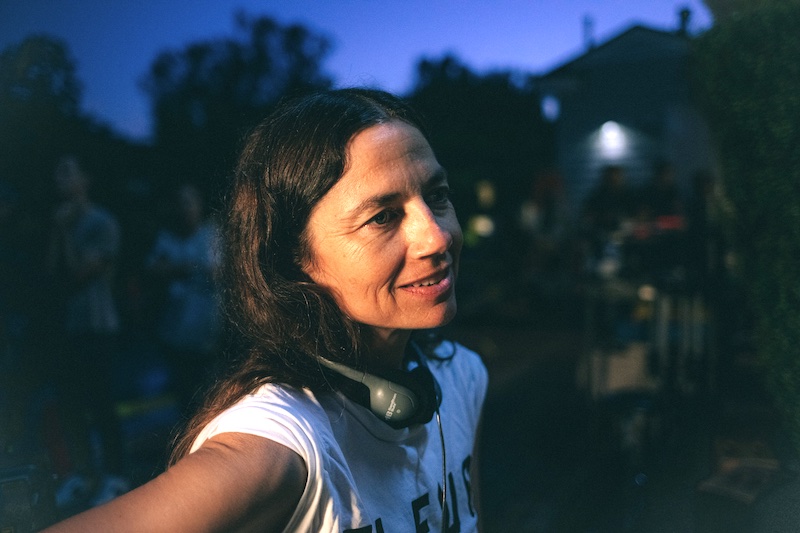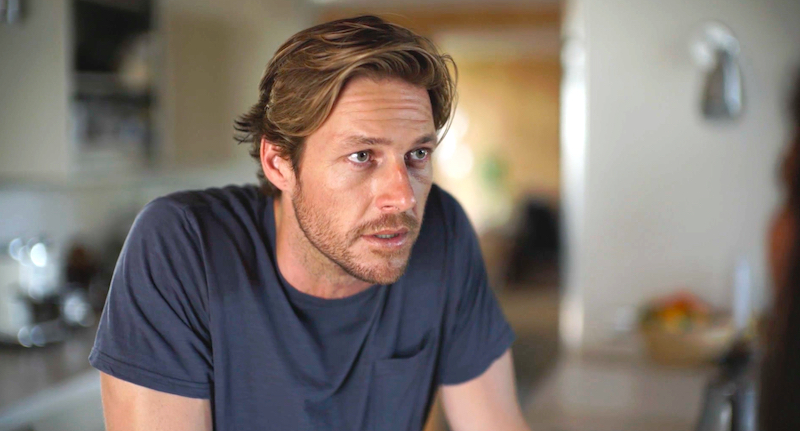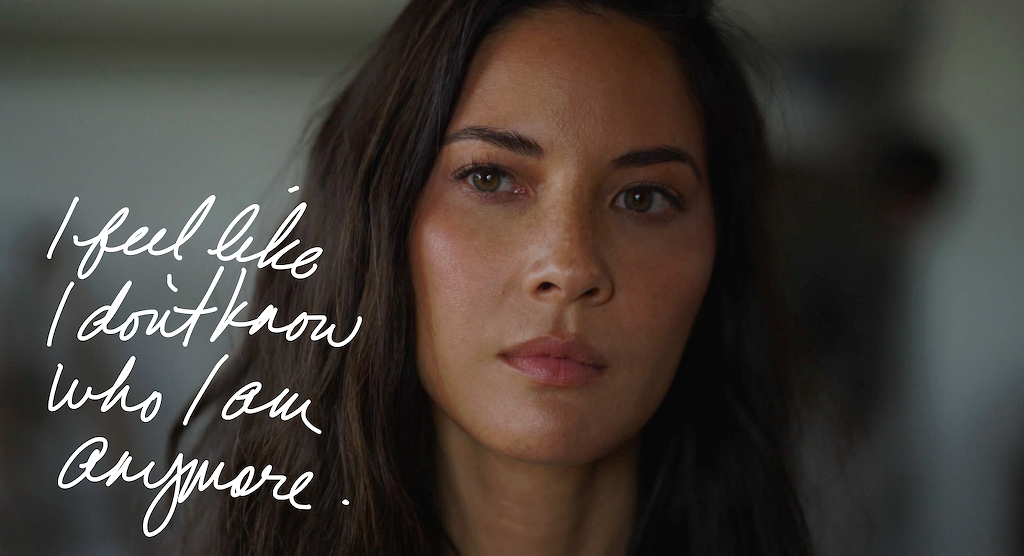“I’ve been writing since I was a kid. Short stories. Poems. In the early 2000s, I started writing scripts, but I would just sort of save them on my computer,” said writer/director Justine Bateman. “Then, in 2008, when digital media took off, I started writing and producing in the digital space.”
Bateman is best known for her early television role as Mallory Keaton on Family Ties, but she also starred on Lois & Clark, Men Behaving Badly, Still Standing, Desperate Housewives, and Arrested Development, alongside her brother Jason Bateman.
“I had wanted to direct since I was 19, but the timing never felt right,” she said. It wasn’t until she graduated from UCLA at age 50 that the timing finally felt right. “I shot the two shorts – Five Minutes and PUSH – then raised the money to shoot Violet.”
Bateman’s debut film stars Olivia Munn and Luke Bracey, where Justin Theroux guest stars as “The Voice” [voiceover] The plot reads, “Violet realizes that her entire life is built on fear-based decisions, and must do everything differently to become her true self.”
“I have a ton of scripts,” she said. “My natural state creatively is writing and making collages. Directing, for me, is making a collage.”
The Visual Collage
Violet is unique in its delivery, where it essentially showcases multiple perspectives within the mind of an individual character. “You’re a freak. You’re fat. Your hair is gross,” voices Theroux, the negative self-talk inside Violet’s mind.
Violet refers to this Voice as “the committee in your head that tells you you’re a terrible person.” On the other end of the spectrum, cursive text arrives on the screen to show Violet’s much smaller, positive inner monologue.

Justine Bateman on the set of Violet. Photo by Steven Meiers Dominguez
“In the script, I just had The Voice and the red tint when she numbs up,” said Bateman. “But I basically just wanted this film to be an immersive experience for the viewer. The viewer is the most important character in the film.”
With these various audio and visual elements, each individual viewer is perhaps guided on a different tour of the film, partly due to how you see Violet’s struggle. Can you relate to it? Does it parallel your own life? As such, we also see characters unlike Violet, such as Red (Luke Bracey) and Lila (Erica Ash), who have no real internal struggle.
“The handwriting was not in the original script. I got to the end of the edit and realized I didn’t have a particular component for the viewer, which was this desperate need to get out of the situation. I realized I could just write it on the screen.”
This visual collage, which mimicked Bateman’s earlier work in photographs and paintings, presented a unique element for the film. “I didn’t know if it would work, but [the writing and the voice] acted as a pressure cooker.”
She added, “It was the Kuleshov effect, where you’re implying something is happening because of the juxtaposition of shots. It’s interesting what we fill in.”
Writing “The Voice”
Bateman said the original dialogue for The Voice was only about half as long in the script. But, in the editing room, she felt more could be added to enhance the film. And, since it only involved more voiceovers, the on screen talent didn’t need to come for “reshoots.”
“The script came out of research in my own personal life. Years ago, I made many fear-based decisions and I wasn’t being myself. I discovered you could get on the other side of that, because I originally didn’t know you could do that. I thought you were this person or that person.”
This decision (which is also the subject of Benjamin Hardy’s book Personality Isn’t Permanent) helped Bateman in her personal life and led to the film. “This is something I wanted to share and basically the film I wish I had seen at age 19 so I would have become myself faster than I did.”

Red (Luke Tracey). Photo by Mark Williams
Violet relates the other side as freedom. For Bateman and Violet, the key seemed to think of these thoughts objectively. Using fear-based reasoning, she could basically ask, “Then what” to The Voice, over and over, until she realized there was nothing on the other side of fear.
“Instead of saying ‘This is me thinking these things and they must be true,’ I started to think, ‘What if someone else was saying these things to me?’ Then, I could ask, ‘Is it true?’” Asking this question to herself enough could help her separate the metaphorical voice and the writing on the screen.
As for the masculine aspect, she wanted to “make The Voice as different from Violet as possible. Change the gender. Change the tone. Change the location of The Voice (in the theater, The Voice moves within the speakers). Hopefully, then, [the audience] can see their own negative thoughts objectively.”
Viewers as Characters
In another unique perspective, Violet is in a meeting with a client and her boss, Tom (Dennis Boutsikaris). The camera pans around and focuses on Tom as Violet pitches to the client. Under the surface, Tom is upset that Violet hi-jacked the meeting.
The camera focuses on Tom for what seems like an eternity until he essentially bursts back into the dialogue, belittling our hero and stealing back the spotlight. It’s interesting how long we hold on Tom, as we essentially see his “red tint” moment.
“Certainly there are people like Lila who are unicorns and either they never hear [The Voice] or they immediately dismiss it. There are many ways to get to that point, but in my experience, this way works. Do the opposite of what it is telling you. That might put you on the right track.”
Underneath this, Bateman asks, “What are the irrational thoughts that are serving that fear? Go through the links in the chain.” An extreme example she gives might be, “Don’t wear that shirt to the party,” where the fear eventually responds, “You will die.” It can be almost comical when you dig deep enough into your own insecurities.
“It sounds silly, but I’ve found those are the anchors for these kinds of fear-based decisions. Unless I say it out loud or write it down, they don’t go away. Saying it out loud or writing it down, you expose it to the elements and it can start to disintegrate.”
As for Violet, we also see her being drawn to other abusers in life, such as her boss. Bateman said that perhaps she sees a chance to fix her past with her boss, which she was unable to do with her mother.
Crafting Characters
As writers, this type of magnetism can help shape side characters as the protagonist is further explored. One shapes the other. “There are also just people like this in life. Tom Gaines is a character who says what she’s thinking in real life.”
“I have this experience on Twitter all the time,” joked Bateman. “These people say what my negative thoughts say to me, but because I know it’s a lie, I know they have said a lie too and they’re going through a moment of discomfort where they need something to grab onto. You want to create a new problem so no one can see you having a problem.”
Underneath the surface, of course, that’s the point of the film. Bateman wants viewers to question their own negative inner thoughts. “By the end, they’re like what Violet is at the beginning of the film. I don’t like this. I have to get out of this,” she said. “I want to help people become themselves and look at why they’re making fear-based decisions.”
In other ways, the film is an extension of her work as an author. Her book Fame is about the raw culture of celebrity. Her book Face is about how culture views aging women. “Fame, Face, and this film is a good trio because it really is all about fear. Deal with the fear before you cut your face. Violet, more generally, is about everything in your life.”
Through this real world experience, the writing process for Bateman is relatively quick. “The writing process for me is that I let things bake for a long time. Then, I sort of take it out of the oven and write it down. I’m able to write very quickly and I usually don’t do drafts. That’s the script. I come in and go through it, but that’s it.”
That said, she does often have a thorough outline and a lookbook to help pitch the film. “If you’re doing something different than you’ve done before, you need to show them what the feel is going to be. I take reference photos for moods, feels, graphics, music, and then put it in video so they can hit play and let it happen. The script is the blueprint, but you want to give them the house once you build it.”
This interview has been condensed. Listen to the full audio version here.

